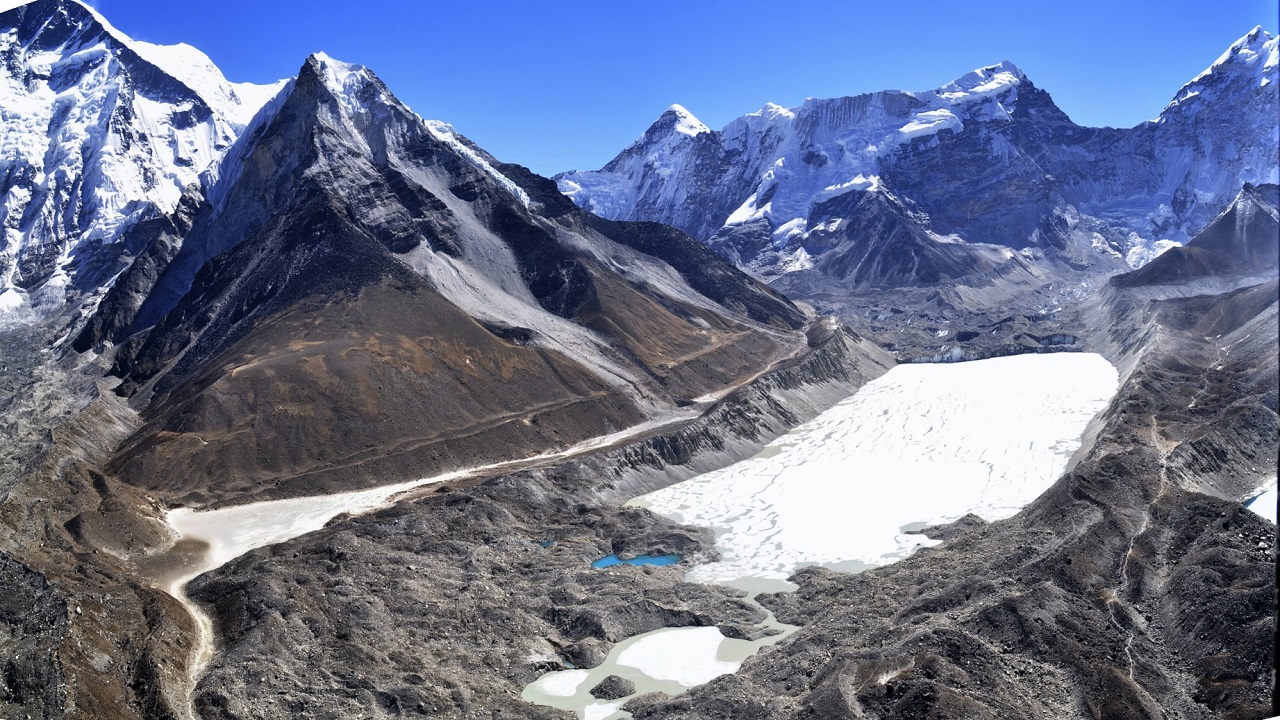Glacial Lake Outburst Floods: A Rising Himalayan Threat
Context
On July 8, 2025, a massive Glacial Lake Outburst Flood (GLOF) in Nepal destroyed a China-built friendship bridge and severely impacted nearby hydropower projects. This incident has triggered concerns across the Himalayan belt, especially in Sikkim, Ladakh, and Uttarakhand, where similar risks are rising due to climate change.
Introduction: What is a GLOF?
A Glacial Lake Outburst Flood (GLOF) is the sudden release of water from a glacial lake, often caused by the failure of moraine or ice dams. These floods are highly destructive and pose threats to human life, infrastructure, and fragile ecosystems, particularly in the Indian Himalayan Region (IHR).
Causes of GLOFs
Natural Factors
-
Glacial Retreat due to warming leads to unstable lake formation.
India has over 7,500 glacial lakes, mostly above 4,500m. -
Avalanches of ice or rock displace water and breach dams.
E.g., South Lhonak Lake (Sikkim, 2023). -
Heavy Rainfall/Cloudbursts increase lake volume rapidly.
E.g., Kedarnath GLOF (2013). -
Seismic Activity destabilizes loose moraine dams.
Uttarakhand falls in Seismic Zones IV & V. -
Internal Seepage erodes moraine dams gradually from within.
Anthropogenic Factors
-
Unregulated construction disturbs fragile glacial zones.
Teesta-III Dam collapsed in 2023. -
Climate Change accelerates glacial melt globally.
2023 and 2024 were the hottest years on record.
Types of Glacial Lakes
-
Supraglacial Lakes: Form on glacier surfaces; unstable during summer.
-
Moraine-Dammed Lakes: Blocked by loose debris; prone to breaching.
Examples: South Lhonak (India), Tsho Rolpa (Nepal).
Impacts of GLOFs
On Human Settlements
-
Sudden floods lead to loss of life, displacement, and economic hardship.
-
Infrastructure damage includes washed-away roads, bridges, and hydropower plants.
Teesta-III (1200 MW) was wiped out in 2023.
On Environment
-
Riverbed silting and course shifts disrupt river ecosystems.
-
Habitat fragmentation and long-term ecological imbalance follow sedimentation and water regime changes.
NDMA’s 5-Point GLOF Strategy
-
Hazard Mapping: Identified 195 high-risk glacial lakes based on size and vulnerability.
-
AWWS Installation: Real-time data from automated stations in Sikkim.
-
Early Warning Systems: Manual alerts by ITBP; digital systems piloted in vulnerable states.
-
Engineering Interventions: Artificial channels, ERT scans, bathymetry for controlled drainage.
-
Community Engagement: Local participation with sensitivity to cultural beliefs.
India’s GLOF Risk Mitigation Measures
Institutional Initiatives
-
National GLOF Programme: A $20 million plan targeting 195 lakes.
-
Committee on Disaster Risk Reduction (CoDRR) ensures coordinated action.
-
16th Finance Commission prioritizes climate-resilient infrastructure (FY27–31).
Technological Tools
-
SAR Interferometry for slope movement detection.
-
ERT Scans to identify internal ice cores in moraine dams.
-
UAVs and Bathymetric Surveys assess terrain and lake volume.
Community Involvement
-
Expeditions to 40 high-risk lakes across Himalayan states in 2024.
-
Manual alerts through ITBP in remote areas.
-
Continuous local engagement in monitoring efforts.
Conclusion
GLOFs are a growing threat in the Himalayas, driven by climate change, seismic vulnerability, and unplanned development. India has shifted from reactive relief to a proactive risk-reduction model using technology, institutional coordination, and community participation. Long-term resilience requires sustained investment, cross-border data sharing, and focused climate adaptation across the Himalayan region.




Comments (0)